History
Institut Mittag-Leffler was founded in 1916 by Gösta Mittag-Leffler and his wife Signe, born Lindfors, and was incorporated in The Royal Swedish Academy of Sciences in 1919.
Please verify and be careful about any phishing and scam attempts from external companies.
All conferences and research programs at IML are free of charge.
We will not ask you for any payments regarding your accommodation or travel arrangements
Institut Mittag-Leffler was founded in 1916 by Gösta Mittag-Leffler and his wife Signe, born Lindfors, and was incorporated in The Royal Swedish Academy of Sciences in 1919.
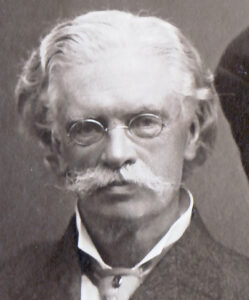
Gösta Mittag-Leffler was born in Stockholm in 1846. He studied mathematics in Uppsala where he received his Ph.D. in 1872 for a thesis on analytic function theory.
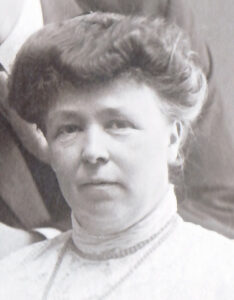
This branch of mathematics always remained his main field of interest. The decisive event in his mathematical development, however, was a fellowship which led him to study first in Paris and then in Berlin from 1873 to 1876, bringing him into contact with leading mathematicians such as Charles Hermite and Henri Poincaré in France and Karl Weierstrass in Germany.
He subsequently obtained a professorship in Helsinki. After a few years there he returned to Stockholm in 1880 as the first professor of the new university.
In Stockholm Mittag-Leffler was very successful in developing mathematics. Another professorship, obtained for Sonja Kovalevsky, was the first appointment anywhere of a woman as a professor much by help of Gösta Mittag-Leffler. Mittag-Leffler attracted many outstanding students such as Edvard Phragmén, Ivar Bendixson, Helge von Koch and Ivar Fredholm. He maintained his excellent international mathematical contacts and strengthened them by founding Acta Mathematica as an international mathematical journal in 1882.
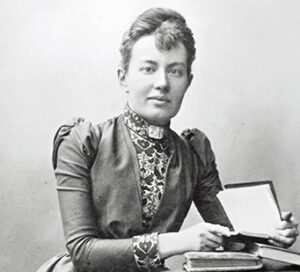 First-rate contributions from leading mathematicians in France and Germany were obtained, and Mittag-Leffler managed to arrange financial support from the Scandinavian governments, partly through the patronage of King Oscar II of Sweden and Norway. Acta Mathematica is still published by the Institut Mittag-Leffler and is one of the oldest and most prestigious mathematical journals in the world.
First-rate contributions from leading mathematicians in France and Germany were obtained, and Mittag-Leffler managed to arrange financial support from the Scandinavian governments, partly through the patronage of King Oscar II of Sweden and Norway. Acta Mathematica is still published by the Institut Mittag-Leffler and is one of the oldest and most prestigious mathematical journals in the world.
Mittag-Leffler was also very active in business. His wife came from a wealthy family in Finland, but Mittag-Leffler became a successful businessman in his own right. This gave him the resources to collect an impressive mathematical library, and he built a villa in Djursholm, a residential suburb of Stockholm, to house it. The villa was built and extended in three stages around 1890, 1900, and 1906 by the well known Swedish architects Rudolf Arborelius, Carl Westman and Ferdinand Boberg.
Gösta Mittag-Leffler was somewhat of a renaissance man, well versed and interested in the arts and in politics, as well as in science. He was famous for the grandiose Nobel festivities given at his villa in Djursholm on December 11 during the years 1904-1914.
Though Mittag-Leffler lived in his villa, it was clearly built with other plans in mind. These were stated explicitly in the will, which he and his wife made public on his 70th birthday in 1916. There they set up a foundation intended to promote research in pure mathematics in the Scandinavian countries. The foundation was to maintain the large library in the villa and to support a research institute there with several professors, and with fellowships for younger mathematicians.
When announced in 1916 the plans for the institute were realistic, at least in that Mittag-Leffler’s financial resources were adequate for the task. However, in 1922 there was a large financial crash related to the economic crises in Europe at the time. The crash brought Mittag-Leffler near bankruptcy, and at his death in 1927 the resources did not allow the full realisation of his original intentions.
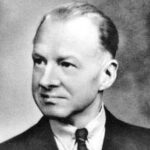 The Mathematicians of the Royal Swedish Academy of Sciences appointed Torsten Carleman as director of the institute. Carleman was a professor at Stockholm University and kept this as his main position. He lived in Mittag-Leffler’s villa where the library was maintained and occasional lectures were given. Also the publication of Acta Mathematica was continued but there was no active institute as originally planned. After Carleman’s death in 1949 unsuccessful attempts were made to appoint a director who would activate the institute. For almost 20 years, the institute existed only as a growing library used by a handful of mathematicians in the Stockholm area and supervised by a member of the board.
The Mathematicians of the Royal Swedish Academy of Sciences appointed Torsten Carleman as director of the institute. Carleman was a professor at Stockholm University and kept this as his main position. He lived in Mittag-Leffler’s villa where the library was maintained and occasional lectures were given. Also the publication of Acta Mathematica was continued but there was no active institute as originally planned. After Carleman’s death in 1949 unsuccessful attempts were made to appoint a director who would activate the institute. For almost 20 years, the institute existed only as a growing library used by a handful of mathematicians in the Stockholm area and supervised by a member of the board.
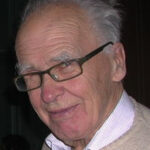
In 1969 Lennart Carleson, director of the institute until 1984, finally realized the intentions of Mittag-Leffler. With financial support from the Knut and Alice Wallenberg Foundation and a few insurance companies, housing for visitors was constructed and the main bulding was modified to provide the required office space. Grants from the Nordic countries made it possible to start inviting foreign mathematicians for extended visits, and to support young mathematicians with fellowships. Since 1969, the institute has been operating in all essential ways as envisaged by Gösta Mittag-Leffler.
In March 2016, the institute celebrated its 100th anniversary.